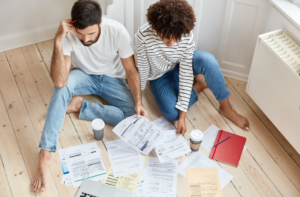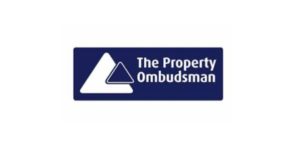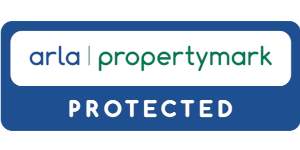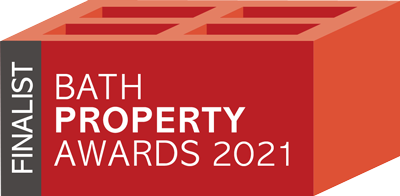Looking to rent out your property? While this is a great way to generate extra income, landlords have a number of legal responsibilities to adhere to that you should be aware of.
Fundamental responsibilities include ensuring the property is habitable and safe for tenants, and taking action to maintain it to a reasonable standard. We’ll go over all the responsibilities you need to adhere to in this article, from a checklist of what to do before a tenancy begins through to what you should avoid doing as a landlord.
What responsibilities do landlords have before a tenancy starts?
Before a tenancy starts, landlords and agents need to complete a ‘right to rent’ check to ensure the tenant can legally rent the property.
Landlords are responsible for restricting illegal immigrants gaining access to the private rental sector, so they must make sure the tenant is legally permitted to reside in the UK. If a tenant does not have the right to rent, the landlord will have to pay an unlimited fine and may be sentenced to five years in prison. Best to do a rent check from the beginning!
What does a landlord need to provide a tenant with?
At the start of the tenancy, the landlord must provide the tenant with:


1. An energy performance certificate (EPC)
It is unlawful to rent out a property which has an EPC rating below E, unless it is exempt, so it is important that the landlord purchases an EPC certificate to avoid a penalty of up to £4000 if the requirement is not met.
2. A gas safety certificate (if applicable)
The gas safety check (on all gas appliances owned by the landlord) should be carried out by a registered engineer.
3. A ‘how to rent’ guide
This helps tenants understand their rights and responsibilities, by providing detailed information on each stage of the rental process.
4. The landlord’s full name and address, or details of the letting agent
Further responsibilities surrounding safe deposits, repairs, and health and safety during the tenancy are detailed below.
5. An Electrical Installation Condition Report (EICR)
An Electrical Installation Condition Report assesses the safety of existing electrical installation in a property, and describes its condition. This helps to ensure the electrical installation is safe to be used until the next inspection, and highlights any issues that may cause dangerous effects such as high temperatures or electric shocks.
6. Prescribed information and deposit certificate
If a deposit has been taken, a certificate must be provided to signify the collection of the deposit and notify the tenant that it is protected. Prescribed information must also provide specific details of the deposit protection and how the protection scheme works.
What responsibilities do landlords have during a tenancy?
Rent, deposits, and financial responsibilities
If the tenant is under an assured shorthold tenancy (AST), the landlord must place their deposit in a government-approved deposit protection scheme. The deposit should then be returned to the tenant when the tenancy ends, unless there is unpaid rent or a dispute about damage to the property.
Landlords must let tenants know when and how they should pay rent, but the rules on increasing rent can vary according to the type of tenancy. Landlords can generally only increase rent costs once per year if the tenancy is periodic (i.e. on a monthly rolling basis), however if the tenancy is fixed-term the rent cannot be increased until this term ends, unless the tenancy agreement permits it.
Finally, as a landlord, you personally must pay income tax on your income from the rental property, and potentially Class 2 National Insurance.
Repairs and property access
Landlords are responsible for most repairs in a property, including both the exterior and the structure of the property itself. They also need to ensure that water, gas and electricity are all being supplied safely.
If a landlord needs to access the property to repair or inspect, they should give a minimum of 24 hours notice in writing (or as specified in the tenancy agreement) and arrange a suitable time to enter the property.
Health and safety responsibilities
All landlords must arrange annual gas safety checks, ensure wiring and electrical appliances are safe (ideally through an installation survey and Portable Appliance Testing), and install smoke alarms on each floor of the property. Carbon monoxide detectors also need to be placed in any rooms that have a wood burning stove or a coal fire.
Local councils can assess the standards of a property’s condition through the Housing, Health and Safety Rating System (HHSRS), helping to maintain good standards in rental properties and ensure tenants are safe. This assessment can take place if tenants request it, or if local authorities think your property may be a hazard.
What should landlords not do?


Here are the top three things landlords should avoid doing, to avoid facing legal action:
- Landlords should not let themselves into a tenant’s home without their permission.
- Landlords should not harass tenants or make it difficult for them to live in their home.
- Landlords should not evict tenants without written notice and a court order. If a landlord attempts to force a tenant to leave without following this procedure, this is an illegal eviction.
Landlords should be aware of all responsibilities and ensure they are legally compliant.
Now that you know a bit more about all the responsibilities you have as a landlord when renting out a property, you can understand your duty of care to the property and its tenants.
Are you ready to rent out your property? Get in contact with us and we can rent out your property in no time.



















